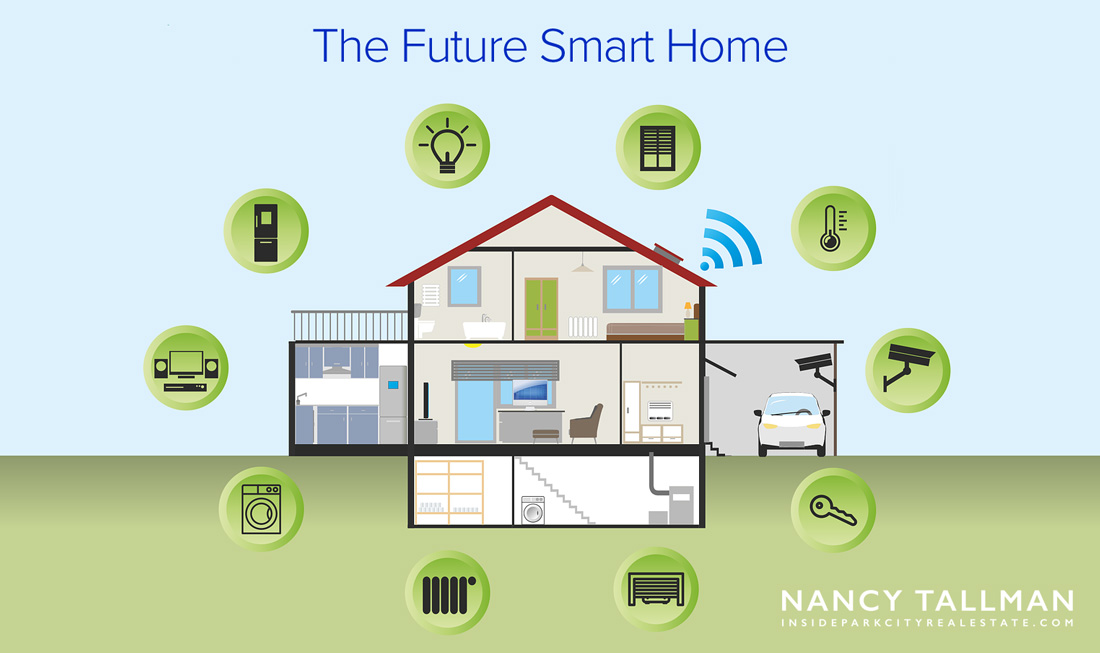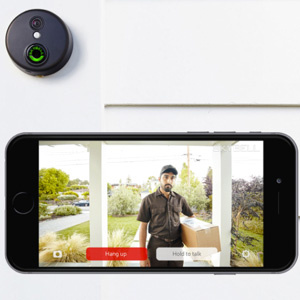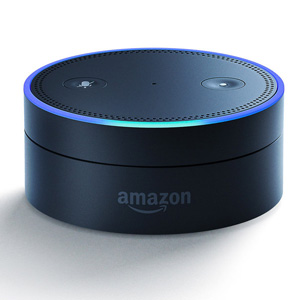 Households have an average of 10 connected devices today.
Households have an average of 10 connected devices today.
That might look like a few smart phones, a couple of laptops, an iPad, a Playstation, Apple TV, Amazon Echo or Amazon Fire Stick. If you’re really into new technology you may have already connected your security, lights and heating and cooling systems via different smart devices such as Nest or Samsung SmartThings.
But the average number of connected household devices is expected to rise to 50 by 2020. What does this mean for the future smart home, and how does it all work?
Currently Available Smart Devices (Not Exhaustive)

Did you remember to turn the coffee pot off? Feed the dog? Lock the doors? Water the plants while you were away? Turn off the sprinklers since the weather is rainy? More and more household devices are capable of being added to your home network. At some point, you are going to be able to simply glance at your phone or tablet to monitor and control a majority of your household functions. Some refer to this as the “internet of things”, and the list of things is growing rapidly. These devices are currently available and the technology is changing rapidly. We should expect this list to grow as we look at the future smart home.
- washing machines
- pet feeders
- plant care
- toothbrushes
- light bulbs
- speaker systems
- security cameras
- thermostats & vents
- door locks
- window shades
- garage doors
- air quality monitors
- gaming systems
- fans
- outlets
- doorbells
- smoke detectors
- baby sleepers
- baby monitors
- television
- espresso & coffeemakers
- internet routers
- medical thermometers
- kitchen herb gardens
- toaster ovens
- blood pressure monitors
- breathalyzers
- mattresses
- sprinkler systems
- propane tanks
- garage doors
- window & door sensors
- humidifiers
How Smart Homes Work
 Smart home technology has been around since about 1975 with a company called X10. At that time, compatible products were allowed to communicate with each other through the existing electrical wires of a home. Limitations happened when the electrical system was burdened with powering devices and not “clear” enough to transmit communications.
Smart home technology has been around since about 1975 with a company called X10. At that time, compatible products were allowed to communicate with each other through the existing electrical wires of a home. Limitations happened when the electrical system was burdened with powering devices and not “clear” enough to transmit communications.
Other technologies have developed that use radio waves instead of power systems. This is how WiFi, Bluetooth and Cell phone signals operate. The two most popular home automation networks, Z-Wave and ZigBee use a combination of networks, called mesh networks. They use different ways to route communications through the fastest network bringing you the speediest results.
Electronic companies have partnered with these network technologies to bring you the end products. These items include smart light bulbs, security cameras and smart thermostats. Usually products using the same technology should be compatible even if they are made from different manufacturers.
Product Integration
 Smart devices can be controlled through hubs, the most popular according to PC Mag is Amazon’s Alexa. Alexa works with a number of home devices directly as well as with an If This Then That (IFTTT ) service. Full integration may take a lot of patience and some technology skills but you should be able to control most devices with your voice through Alexa.
Smart devices can be controlled through hubs, the most popular according to PC Mag is Amazon’s Alexa. Alexa works with a number of home devices directly as well as with an If This Then That (IFTTT ) service. Full integration may take a lot of patience and some technology skills but you should be able to control most devices with your voice through Alexa.
Wink Hub 2 is a popular hub device and voted the most reliable. It can connect to devices that work on Z-Wave, ZigBee, Lutron Clear Connect, Kidde, Bluetooth and Wifi which is most of the devices that are out there. Wink Hub 2 is also compatible with Google Home.
Samsung SmartThings is worth a mention. It is a hub that can be purchased on it’s own, or it comes in a kit that gives you a number of sensors that can be used to monitor your home. It’s a good set of building blocks to start your home automation. SmartThings works with an app that sends you updates throughout your day.
If your hand longs for the old-fashioned comfort of a remote with a bunch of buttons to push, Logitech offers the Harmony Elite. This is a truly universal remote that powers all Bluetooth, WiFi, ZigBee, Z-Wave or infrared device in your home.
Control at your Fingertips
 All of this sounds sleek but how do you control your home with a phone? Some devices have had their own dedicated app, which has been around for a few years for things like security systems and baby monitors. However, as the smart home revolution grows, most network hubs offer apps that you can download onto your phone or tablet to monitor all devices within one app. Many offer set-up instructions to get all of your devices functioning.
All of this sounds sleek but how do you control your home with a phone? Some devices have had their own dedicated app, which has been around for a few years for things like security systems and baby monitors. However, as the smart home revolution grows, most network hubs offer apps that you can download onto your phone or tablet to monitor all devices within one app. Many offer set-up instructions to get all of your devices functioning.
Google Home offers an app that lets you control compatible devices, as does the Wink Hub 2. Alexa works with an app named “Roger” who can speak directly to the hub in your home. Apple has developed Home, a dedicated app that can be used with an Apple Watch, a iPhone or an iPad. Devices that are compatible are labeled “Works with Apple Homekit”.
The best part of this technology is that it is readily accessible. Smart devices are sold at your local electronics store, hardware store and of course, Amazon. If you are looking to make your home a little smarter, all it takes is a few clicks of the mouse.
What Smart Devices Are You Using in Your Home?
Are the smart devices you’re currently using in your home truly useful? Or are some more of a novelty? What do you see for the future of the smart home? Are we going to live like The Jetsons? Do tell in the comments below.
1 Comment
I wish all homes were smart and could tell owners when there’s a problem!